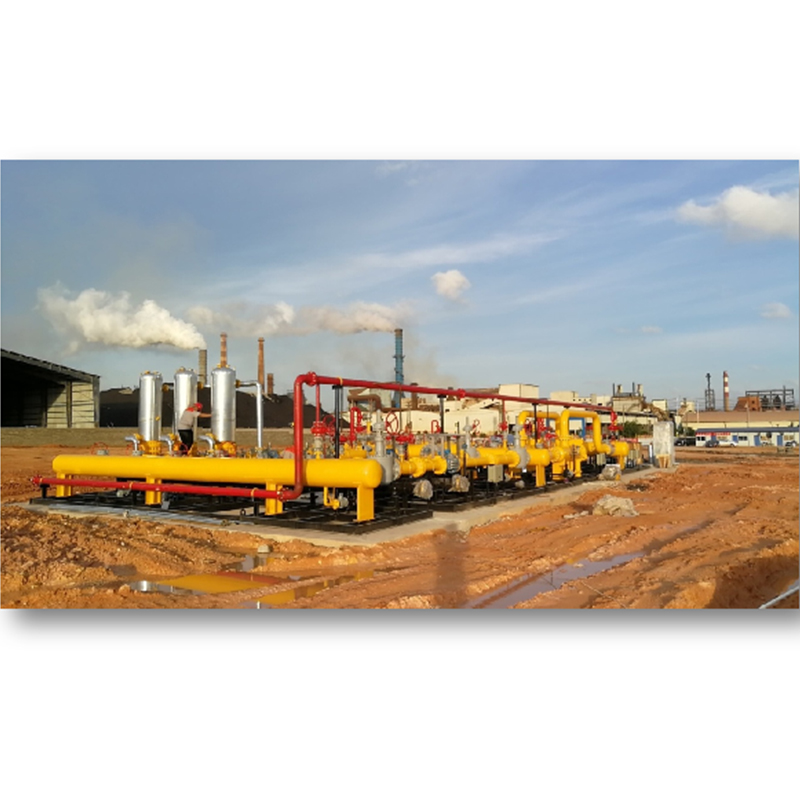
Dec . 01, 2024 05:25
Back to list
Understanding the Fundamentals of Pressure Vessel Design and Safety Considerations
Understanding Pressure Vessels Design, Function, and Safety
Pressure vessels are critical components in various industries, including oil and gas, chemical manufacturing, and power generation. These containers are designed to hold liquids or gases at pressures substantially different from the ambient pressure. The ability to safely manage high-pressure environments is essential for operational efficiency and safety, making the design and maintenance of pressure vessels a critical topic.
What is a Pressure Vessel?
A pressure vessel is defined as a container designed to hold gases or liquids at a pressure that differs significantly from the outside pressure. Typically, they are constructed from strong materials like steel or composite materials that can withstand high pressure. Common examples include gas tanks, boiler drums, and storage cylinders for liquefied gases.
Design Considerations
The design of pressure vessels is governed by various standards and codes, which ensure their safety and reliability. Some of the most recognized standards include the ASME Boiler and Pressure Vessel Code and the API standards used in the petroleum industry. The design process involves several key considerations
1. Material Selection The materials used in constructing a pressure vessel must have high tensile strength and good corrosion resistance. Depending on the contents, materials may vary from carbon steel to more specialized alloys.
2. Thickness and Geometry The thickness of the vessel walls is determined by the internal pressure, the nature of the contained material, and the expected operating temperature. Spherical and cylindrical shapes are commonly used due to their structural efficiency.
3. Safety Margins Engineers design pressure vessels with safety margins to account for unforeseen circumstances such as surges in pressure or temperature fluctuations. The safety factor is typically between 1.5 and 4 based on the design code.
pressure vessel

4. Inspection and Maintenance Regular maintenance and inspections are vital to ensuring the integrity of pressure vessels. Techniques such as ultrasonic testing, radiography, and visual inspections are employed to detect any signs of wear or failure.
Pressure Vessel Applications
Pressure vessels have a wide range of applications across industries. In the oil and gas sector, they are used to store natural gas, crude oil, and intermediate products. In the chemical industry, they are essential for reactors that operate under high pressure and temperature conditions. Additionally, pressure vessels are found in water treatment facilities, food and beverage industries, and even in the aerospace sector.
Safety and Regulations
The inherent risks associated with high-pressure environments necessitate strict adherence to safety regulations. Failures in pressure vessels can lead to catastrophic explosions, resulting in loss of life, environmental damage, and significant economic impact. Therefore, regulatory bodies enforce stringent guidelines for the design, manufacturing, and operation of pressure vessels.
Operators must follow comprehensive safety protocols, including
- Regular Inspections Routine checks and maintenance are mandated to identify potential issues before they escalate. - Training Personnel working with pressure vessels must receive proper training to recognize hazards and respond to emergencies. - Emergency Planning Facilities should have emergency response plans in place in case of a pressure vessel failure, including evacuation routes and containment strategies.
Conclusion
Pressure vessels are indispensable in numerous sectors, contributing significantly to the smooth operation of processes that require the management of high pressure. Understanding their design, applications, and safety measures is crucial for engineers, operators, and stakeholders involved in industries that utilize these critical systems. As technology advances, ongoing improvements in material science and engineering practices will continue to enhance the safety and efficiency of pressure vessels, ensuring they meet the demands of the future while protecting people and the environment.
Next:
Latest news
-
Safety Valve Spring-Loaded Design Overpressure ProtectionNewsJul.25,2025
-
Precision Voltage Regulator AC5 Accuracy Grade PerformanceNewsJul.25,2025
-
Natural Gas Pressure Regulating Skid Industrial Pipeline ApplicationsNewsJul.25,2025
-
Natural Gas Filter Stainless Steel Mesh Element DesignNewsJul.25,2025
-
Gas Pressure Regulator Valve Direct-Acting Spring-Loaded DesignNewsJul.25,2025
-
Decompression Equipment Multi-Stage Heat Exchange System DesignNewsJul.25,2025

